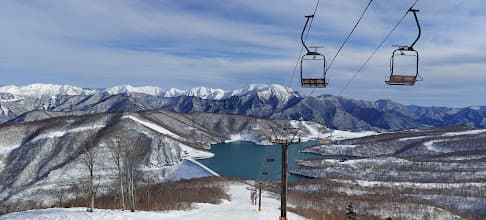

Written by Remco Mensinck
What Length for Powder and Freeride Skis?
As a rule, body height to body height + 5 cm.
| Height (cm) | Height (feet/inches) | Suggested Ski Length (cm) |
|---|---|---|
| < 152 | < 5'0" | 150 - 160 |
| 152 - 163 | 5'0" - 5'4" | 160 - 170 |
| 163 - 173 | 5'4" - 5'8" | 170 - 180 |
| 173 - 183 | 5'8" - 6'0" | 180 - 185 |
| 183 - 193 | 6'0" - 6'4" | 185 - 190 |
| > 193 | > 6'4" | 190 - 195 |

Less Effective Edge Means Longer Skis
Freeride and powder skis often have more rocker in their profile. This means that the tip of the ski rises earlier than, for example, a race ski. This creates extra buoyancy and makes initiating a turn on and off the piste easier. As a result, the effective length, the length of the steel edge that actually cuts into the snow in a turn, is relatively short.
This is also the reason why most people choose a relatively long length when they select a freeride or powder ski. The extra length also gives the ski more surface area, and therefore more buoyancy in the powder snow.

A Reason to Go for Shorter Freeride Skis?
Freeride skis are not often skied in relatively short lengths, yet there are three reasons to take a shorter freeride ski. The first is if you simply prefer a more comfortable ski that is easy to ride. In this case, however, I would rather recommend taking a different model that is, for example, less stiff, as this retains the buoyancy of a longer ski while also being easy to ski.
The second reason is if you plan to do a lot of touring. The extra length also brings extra weight. When choosing a ski for extensive touring, it is often skied about +/- 10 centimeters shorter than a ski that you only use with a lift. If you only want to tour for the downhill, you can of course decide to stick with the "normal" length, as this is mostly a personal preference.
The last reason for a shorter freeride ski is for experts who engage in very steep couloirs and the like. When you are making jump turns in a couloir, it is not pleasant to have to turn around a 190+ cm ski and maneuver through narrow technical sections.